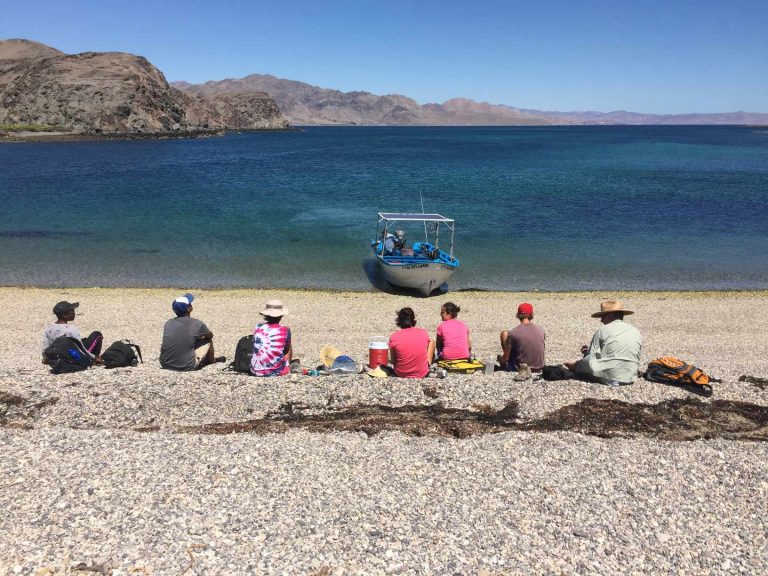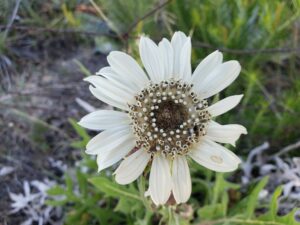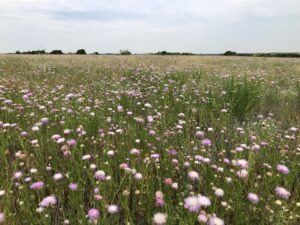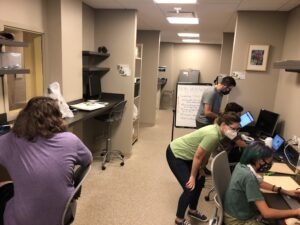This “Notes from the Field” post was written by BRIT Biodiversity Explorer Dr. Sula Vanderplank.
Exploring the plant ecology of the Bahía de Los Angeles Island Archipelago, with staff and students from the Ocean Discovery Institute
With Dr. Drew Talley, Quinn Heist, Leslie Torre, Ndekey Kahindo, Samantha Gaeta, Aurora Figueroa, Joan Flores, and Joel Barkan.

Saturday, July 2nd
We met at the office at 6:30 am and proceeded to spend about two hours packing the truck with food. 40 mouths are many to feed, and after hundreds of pounds of coolers, boxes, bags of rice, and beans, stuffed in between with fresh fruit, we load up and hit the road. It’s a lengthy drive (via Mexicali), and we switch drivers in San Felipe, before embarking on the long (~40 km/ 23 mi) dirt road south. Our vehicle wants to go faster, but we slow down to botanize and try to stay light-hearted through the painfully slow crawl. I’m delighted to be traveling with two rock star scientists from NOAA—Dr. Tina Fahy and Stephanie Nehasil—whose conversation I enjoy immensely. We reach our destination at sunset, and it’s spectacular! We rush to unpack the trucks, and I somehow accidentally lock the keys in the car. Luckily we’re now in a town, and a locksmith comes to save the day.
We wolf down a tasty dinner and make introductions, and I set up a cot outside the staff house and fall asleep almost instantly, not waking again until the first light of dawn with a beautiful bat circling above my head. I smile to think no insects or mosquitos will be near me thanks to this scenario, and as I sit-up a little I see the most spectacular sunrise beginning on a horizon of black islands and an inky sea.

Sunday, July 3rd
Today is my free day. As I walk to breakfast I see the Mobula rays jumping, and my heart soars. I quickly seize an opportunity to go snorkeling, and by 7:30 am we are off, heading out to the bay to look for whale sharks. We find a small one, but the action is slow, so we head out to a great snorkeling spot at Isla Pescador. It’s wonderful—I swim around the point in the shallows seeing large numbers of yellow fin (jurel) and a ton of friendly puffer fish that I can almost touch. At the point, the marine environment changes, seems more productive; shallow boulders have miniature gardens of algae that in turn host a plethora of tiny fish, anemones, crustaceans, corals, sea stars, and other treasures. There are small fish that behave like snakes and tiny fish that flit like gobies. It’s a magical place, and I assume the waters are nutrient-rich as a result of some upwelling on the outer side of this mini-peninsula. The chasms are much deeper on this side, and although the water is warm at the surface, it’s pretty cold in deeper water, and I soon realize that I am too cold to continue.
I make it back to the boat barely able to pull myself out of the water (!). I don a borrowed shorty wetsuit, and we move to an area known as the drunken rocks. Currents are strong so we don’t stay long. And now we’re looking for whale sharks again. I decide I’m not interested, but when we pull alongside a monster and the captain yells “Go on! Get in!”, I abide. It’s amazing! I’d forgotten the absolute majesty of swimming alongside a creature of this size. It is magnificent. I can see the cleaner fish on its tail and back, and if I swim as hard as I can, I can reach its head and swim alongside the main dorsal fin. Suddenly it turns towards me and dives down, passing directly underneath me. An amazing three minutes. I’m exhausted! We head in for a lunch of making your own spring rolls, and an afternoon pow-wow about the week ahead.


We’re here to work with a group of 24 under-represented kids in the Bahia de Los Angeles, Baja California, Mexico. The Ocean Discovery Institute has organized a five-week camp for these kids, with 30+ scientists visiting over the course of the summer. My stint is just six days (plus two days driving), and today is my only day off. I feel like I made the most of it. Dinner is served at six-thirty after a talk by Dr. David Sandstrom on sea-slugs. The talk is fascinating. I had no idea that there were animals that steal chloroplasts from the green algae they eat. They store this contraband in their own tissues, where the chloroplasts continue to produce sugars for some time.
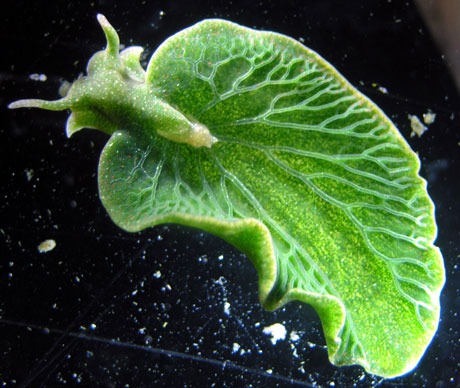
After dinner, I’m able to contact an old friend, Karina Rubio, who lives near town. She and her husband (Pancho Murrillo) drive out to say hello, and I have brought them a packet of photos from our last trip together, which is now more than two years ago. I’m delighted to see her, and heart full, I walk back to camp just in time for the “family meeting” that celebrates the achievements of the week then looks forward. As we walk back, the wind is whipping around us, and scores of tiny mesquite flowers are flung into our hair, making it look like we’d just walked back from a wedding. Then we have a team meeting—I’m so excited about my team! Five bright young students, a project manager who couldn’t be more excited about plants, and Dr. Drew Talley from the University of San Diego as a Co-PI. Team Perfect.


Our plan for the week is to resurvey as many of the small islands in the bay as possible, comparing the abundances of perennial plants to those documented in 2002 by the thesis of Patty West. One of the students asks me if I’m planning to do a lot of extra research without them. I answer that I hoped we could do as much as possible all together and be a team and have the best project ever. They seemed to like that answer!
I’m oh-so-tired again tonight and find time for just one beer before crashing. The winds are so strong that we all have our cots on the porches of the buildings in little rows.

Monday, July 4th, Independence Day – first day of field studies.
I wake up very early, with terrible allergies. I can’t seem to stop sniffing and sneezing, so I get up early and tiptoe over to the staff building. The sunrise is again magnificent, and I enjoy watching the local fisherman circling around and making bait on their pangas. I check my emails, change my clothes, and pack my field bag. Breakfast is at 6:30 am, and we’re in the boat by 7 am. I have a field press, and we have several gallons of water with us. Our first island stop is Cerraja, my first taste of the Bahia de Los Angeles Islands. She’s beautiful! The students rush off to check the pitfall traps they installed six days ago, and I marvel at the wealth of cacti and totally crispy annual plants. I quickly realize that (unsurprisingly) we would have to exclude all annual plants from our analysis—there had been no new growth here in quite a while. We see cardónes, barrel cacti, hedgehog cacti, fishhook cacti, and more. In fact, we even record a second species of fishhook cactus for the island. I’m delighted—we can really see some changes in the perennial flora over the past 15 years, and we’re able to document the abundance of all the perennials. The students seem pretty engaged, and they’re keeping up with all the names and methods; it’s going well.
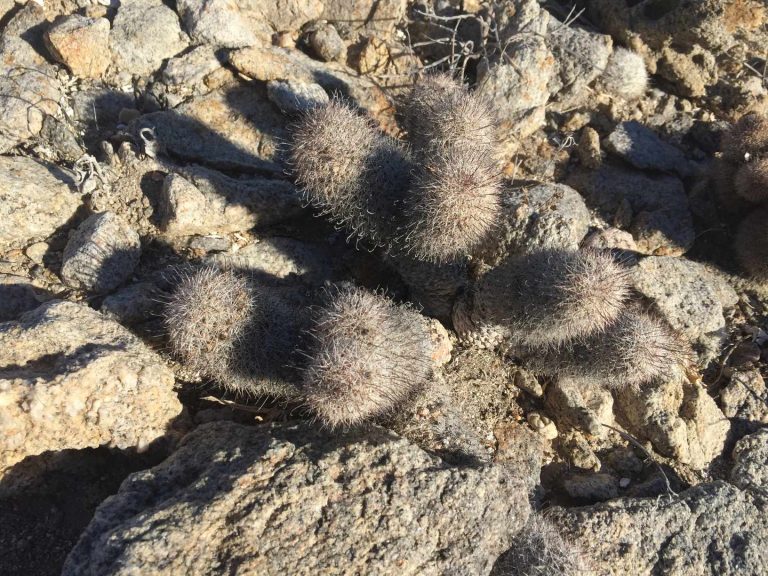
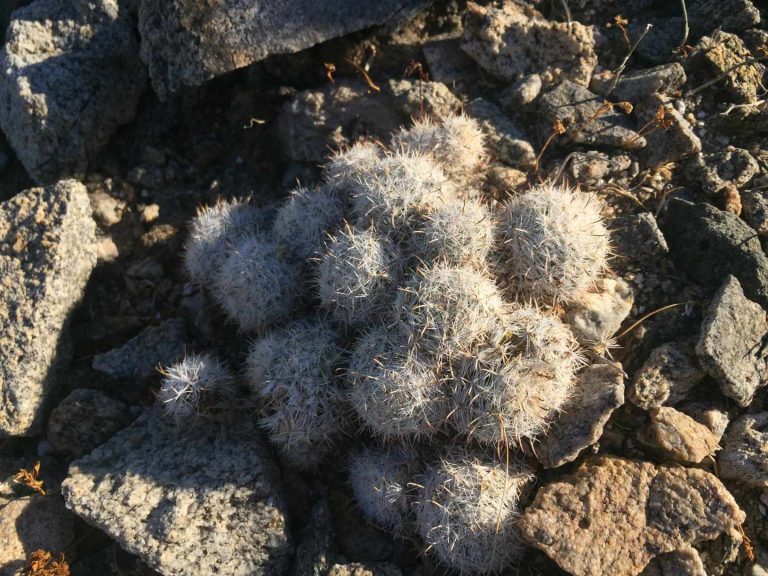
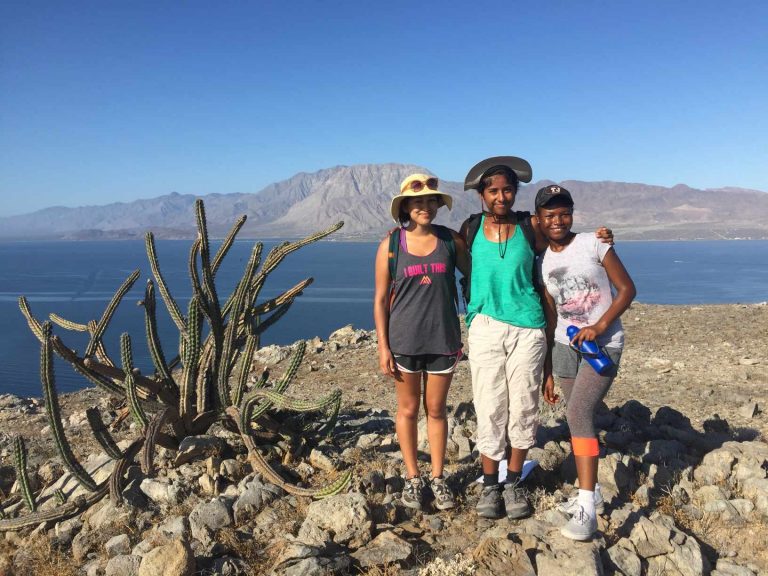
The second island is Llave. It’s smaller and less diverse, which makes life easier. We split into teams here, and the plant team surveys while the insect team measures the surface area of the chollas and the spider diversity that each one supports. We can see several dead cardónes, and their abundance seems to have dropped to rare. We also find the other fishhook cactus here (new record), but we’re unable to locate the hedgehog cactus, and we speculate on its disappearance.
We get back on the boat, and our amazing panga driver Martín, long-term friend of the program, has caught several bass and made ceviche for us. DELICIOUS!!
Now we’re rushing to our third, much bigger island, Ventana, which has a lot more plant life. I’m excited to see agaves (Agave cerrulata) and the torote (Bursera microphylla) from the water. We land in a hurry, and I’m amazed how many of the perennial species on the list we find in 30 minutes, right there at the landing. We don’t have time to do extended abundance estimates, but we do press a couple of fertile specimens, and I point out a few of the botanical highlights to our team of budding plant ecologists.
Lunch is tostadas. I’m exhausted!
Tuesday, July 5th
Though it’s not as hot as yesterday, the afternoon heat was endless and without reprieve, so I sat in the shade with a small fan and worked quietly for a while. The evening’s festivities included some face-painting and Zumba—which I really quite enjoyed—and finally a good night’s sleep in a cot by the ocean. I awoke before dawn again, and quickly it was hot.
Today we visited another three islands. Coronadito was small, and the plant team did a great job recording all the perennials with some interesting differences in the numbers of cacti. A treat for me was getting fairly close to a large colony of my name-sake birds, the blue-footed boobies (Sula neobouxii), nesting in the cliff.
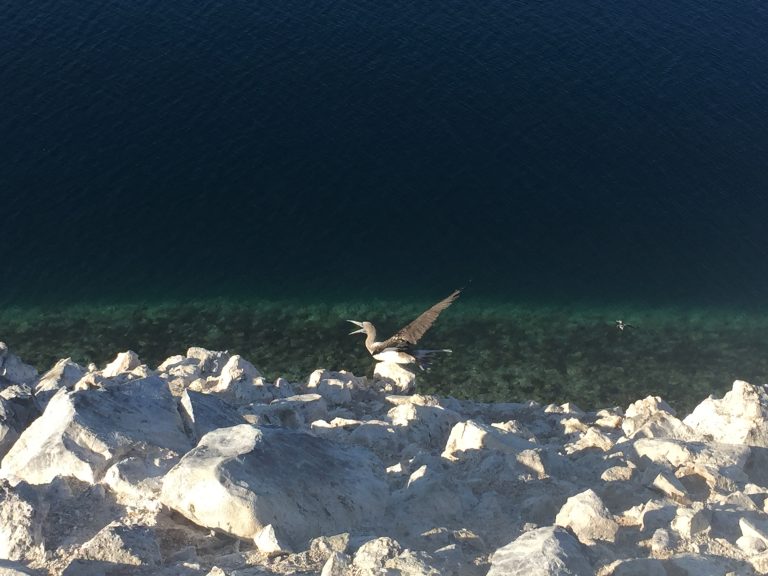
Coronado/Smith Island was huge and somewhat barren for an island of its size. I collected an “asteraceous” shrub that was unknown to me and made a few notes on the flora while the students checked their pitfall traps for beetles. It’s not enough time to make an exhaustive study of the perennial flora, so instead I search for the endemic barrel cactus, Ferocactus gatesii. It’s the only plant known to be endemic to these islands, but my search on this particular island was not successful. I’m sure it’s there somewhere, just not where we landed.
I’m anxious to move on to the next island, Mitlán. It’s smaller, and we should we able to conduct an exhaustive survey. We’re moving slowly in the heat but still feeling positive, and we land on Mitlán around 11:30 am. We split into teams, and the plant team again is covering ground, identifying plants. We make an exciting discovery of a fagonbush (Fagonia sp.) which might be a new record for the island, but there are several perennials noted in the 2002 thesis that we are unable to relocate, including the senita or old man cactus (Lophocereus schotti), which had been noted to be rare previously, and the fishhook cactus (Mammillaria insularis) which was formerly noted as scarce, but couldn’t be found. Both these plants are of particular interest as one (the old man cactus) is listed on the Mexican Endangered Species List (NOM 059) and the other is one of the rarer regional species.
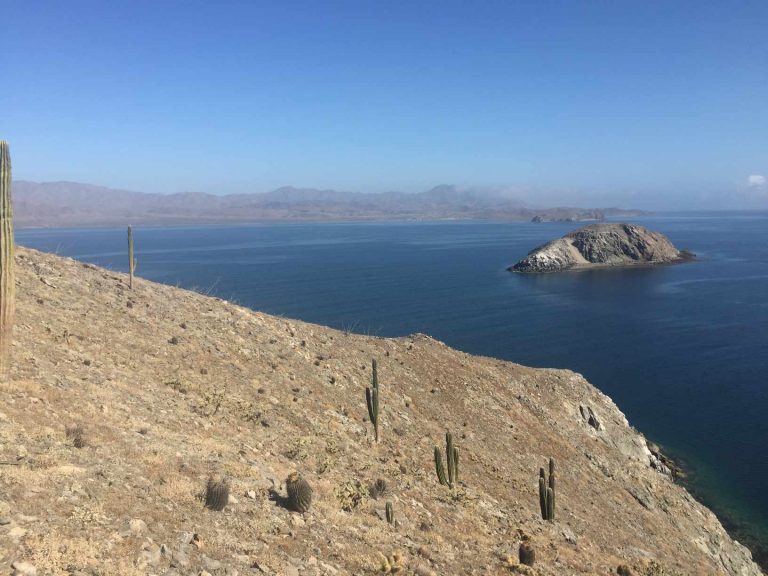
Hot and tired we walked back to the boat and took a quick trip around the coast to check for any plants we couldn’t see from the higher points of the island. Still no sign of our cactus. We start the fairly long ride back across the bay, which is surprisingly choppy, and I get soaked with salt water. This was not disheartening as dolphins were jumping clean out of the water and amazing us all on the ride. Arriving to shore I rush to change, and we head straight to the local CONANP office. CONANP (Mexico’s National Commission for Natural Protected Areas) is responsible for the management of these islands and are working with on this research. The meeting goes well and I am inspired, but stay indoors to beat the heat for the rest of the afternoon.
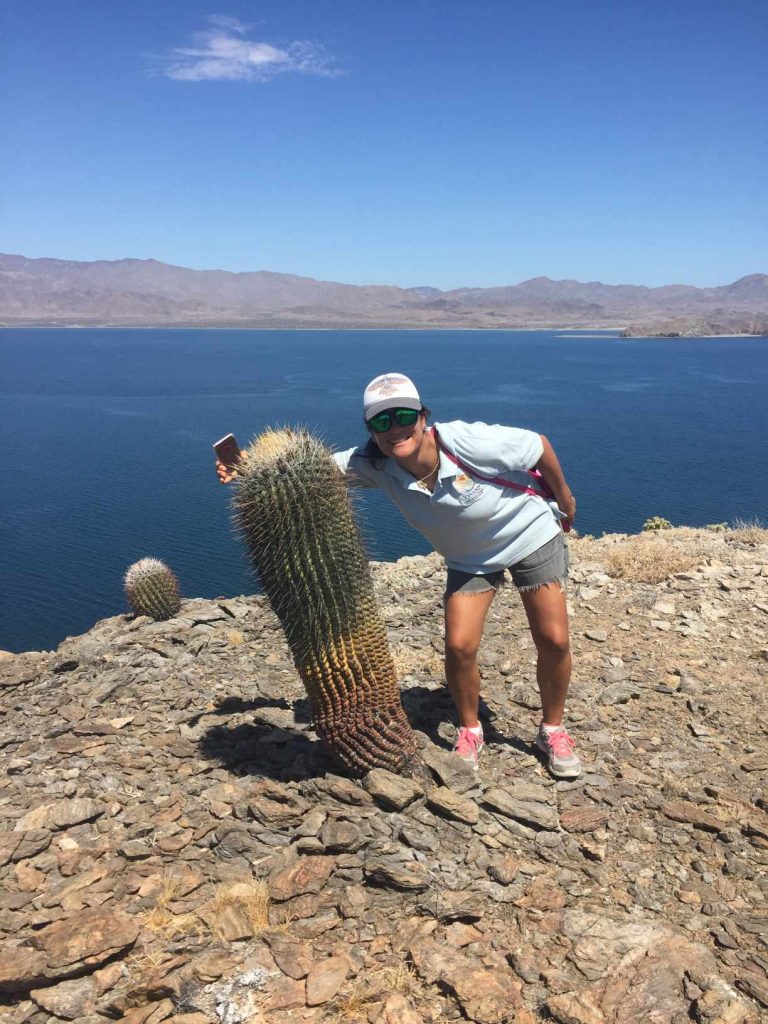
Wednesday, July 6th
Well, I was surprisingly tired again yesterday. Enjoyed hearing Richie play the guitar at sundown and got an early night. Today another early start and out to the magnificent islands of Flecha, Jorobado, and Pata. The first two I just loved—great hikes, great views. Super plants on Flecha, a total of just 4 perennial plants on Jorobado (so that was a quick visit), but Pata blew us away! LITERALLY! Two of the students were blown over (!),my hat blew off, and we had to turn back from the peak. Very disappointing, as we were close to re-documenting all the perennial plants that Patty West had recorded in 2002. One exciting discovery was the true elephant tree (Pachycormus discolor, Anacardiaceae) which I can only assume was formerly ID’d as Bursera microphylla (an easy mistake to make), since it appeared to be more than 15 years old. Luckily it was flowering, and I was able to grab a small piece for the press.
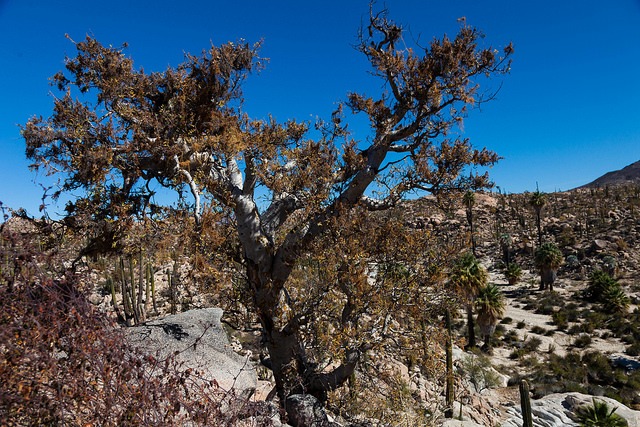
We had some delicious fresh rock-bass (cabrilla) ceviche in the boat between Jorobado and Pata, and that definitely compensated our sore legs and sticky bodies for their efforts. The ride back seemed long, and the students were sleepy. Once back at camp we ate, cooled off with a quick dip, and headed to the local museum which Carolina Espinoza had kindly opened for us. Wonderful museum, great tour, excellent souvenirs!
I feel a sense of sadness that this is my last day in the field with the students. I’m very fond of them and will miss them very much tomorrow when we head out without them (they have a field trip to go clamming and snorkeling).
Thursday, July 7th
6 am. Wow—staff meeting last night was interrupted by a whale-shark swimming past, and then my night was filled with lightning strikes over the water behind my head and shooting stars above. Magical! My allergies get worse every time the wind blows, but otherwise it’s pretty divine now. The nights are finally cooler, but the sun is hot hot HOT! First views of the day were the fishing boats with the ocean as flat as a pond. Today is my last field day.
6:38 pm. So many highlights today! We left at 7 am again, first going to the lovely island of Gemelito West where I was thrilled to hear the fish-eating bats roosting in the rocks. Their chirps were amazing, and although we never saw them, I was delighted to know they were there. We also got very close to some frigate birds and blue-footed boobies. The next island was Cabeza de Caballo, which was too big to thoroughly inventory, but which Drew had wanted me to see because of the amazing plant life (which included many old succulent friends). There I saw my first chuckwalla (Sauromalus)! What an amazing animal! He looked so reminiscent of the iguanas of the Galapagos Islands (which I have only ever seen on the television). He made no effort to escape my hands, and I was again overwhelmed by the diversity of these special islands.

Next we drove past the back side of Ventana, to check the abundance of the barrel cactus, and then we went back to Pata to finish checking the plants of the high peak that we couldn’t reach yesterday. A long hike revealed that we had basically missed very little yesterday! Still the views from the peak were spectacular.
Next we went to Bota, a new island for me again, small enough to quantify fairly accurately, but a patch of green shrubs at the bottom of the west end led us down a very long, steep scree slope. We were well-rewarded with two new records for the island: Santa Lucia (Trixis californica) and the whitestem milkweed (Ascelpias albicans).
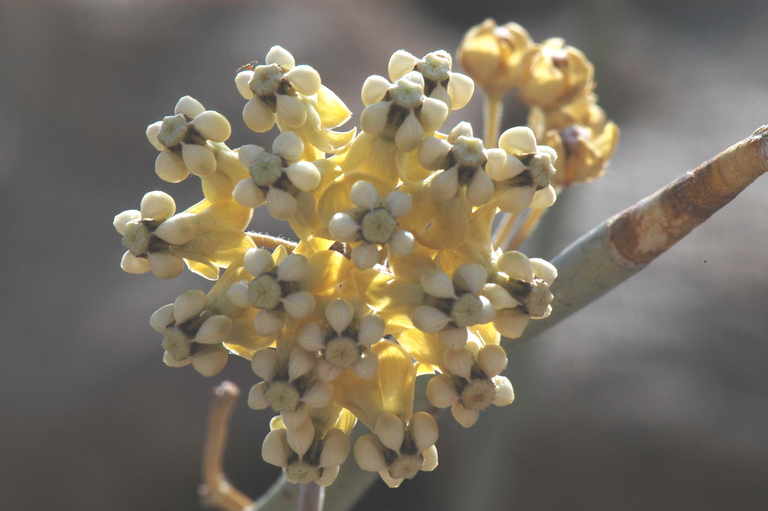

Finally we decided to take the boat around Coronado Island in a last attempt to locate the barrel cactus, which was previously recorded as scarce here in 2002. The boat ride was long, and the oceanward currents were strong, creating bigger waves than I had anticipated. After an hour or more circuiting the perimeter, we realized that the barrel cacti were nowhere to be seen, and we headed back to shore, stumbling across a whale shark on our way back to field station.
The afternoon activities included a question and answer session with the students. The highlight for me was when one student was asked “If you could have any job for one day, what would it be?” and she answered, “I would be Sula. I would be a botanist!”

Friday, July 8th
Getting ready for a super-early departure tomorrow. Great morning entering data with the students. After some heart-felt goodbyes and a very sweaty Zumba session, I went for a quick “midnight swim” by myself in the dark, and the water was full of phosphorescence. What a lovely way to end the trip. Looking forward to next year!
